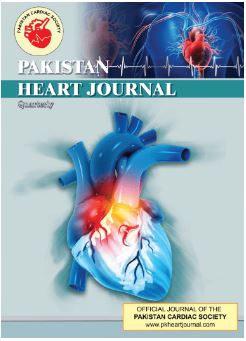Biliary tract injury during open and laparoscopic cholecystectomy and Management: An observational study at the tertiary care Teaching Hospital
Main Article Content
Abstract
Background: Bile duct injuries after laparoscopic cholecystectomy (LC), being one of the most common performed surgical procedures, remain a substantial problem in gastrointestinal surgery. The most important aspect regarding this issue is the prevention of Bile duct injury during index cholecystectomy. Once it occurs, early and accurate diagnosis of Bile duct injury is very important for surgeons and gastroenterologists, because unidentified Bile duct injury may result in severe complications such as hepatic failure and death. Laboratory tests, radiological imaging, and endoscopy play an important role in the diagnosis of biliary injuries. Method: This is a prospective, single-center, observational study including patients treated for a Bile duct injury during a cholecystectomy at the tertiary care Teaching Hospital over a period of 1 year. All patients were older than 18 years and were informed of such a study and gave informed consent. All types of iatrogenic injuries were included: minor or more complex, whatever their management (endoscopic, radiological, surgical, or combined). Other biliary injury etiologies, mainly traumatic causes, were excluded. Minor wounds were defined as those affecting the cystic stump, the cystic duct, and the junction between the cystic duct and the MBD, and major wounds were defined as those affecting the MBD, the common hepatic duct, and the right hepatic branch. Results and discussion: Out of 90 patients with bile duct injuries, 58 (64.4%) incurred the injuries during open and 32 (35.6%) during laparoscopic cholecystectomy. No differences between the groups were observed concerning the time of bile duct injury diagnosis, type of injury, incidence of concomitant vascular and bile duct injuries, type of reconstruction procedure or complication rates after the primary intervention. The latency of bile duct injury management was found to differ between the study groups. In the open cholecystectomy group, bile duct injuries were managed significantly later than in the laparoscopic one. Conclusion: Bile duct injury after Laparoscopic cholecystectomy requires a multidisciplinary approach with specialized physicians at tertiary hospitals. Imaging techniques and proper classification is required in order to prevent or treat sepsis, biliary leaks, and collections.
Article Details

This work is licensed under a Creative Commons Attribution-NoDerivatives 4.0 International License.

